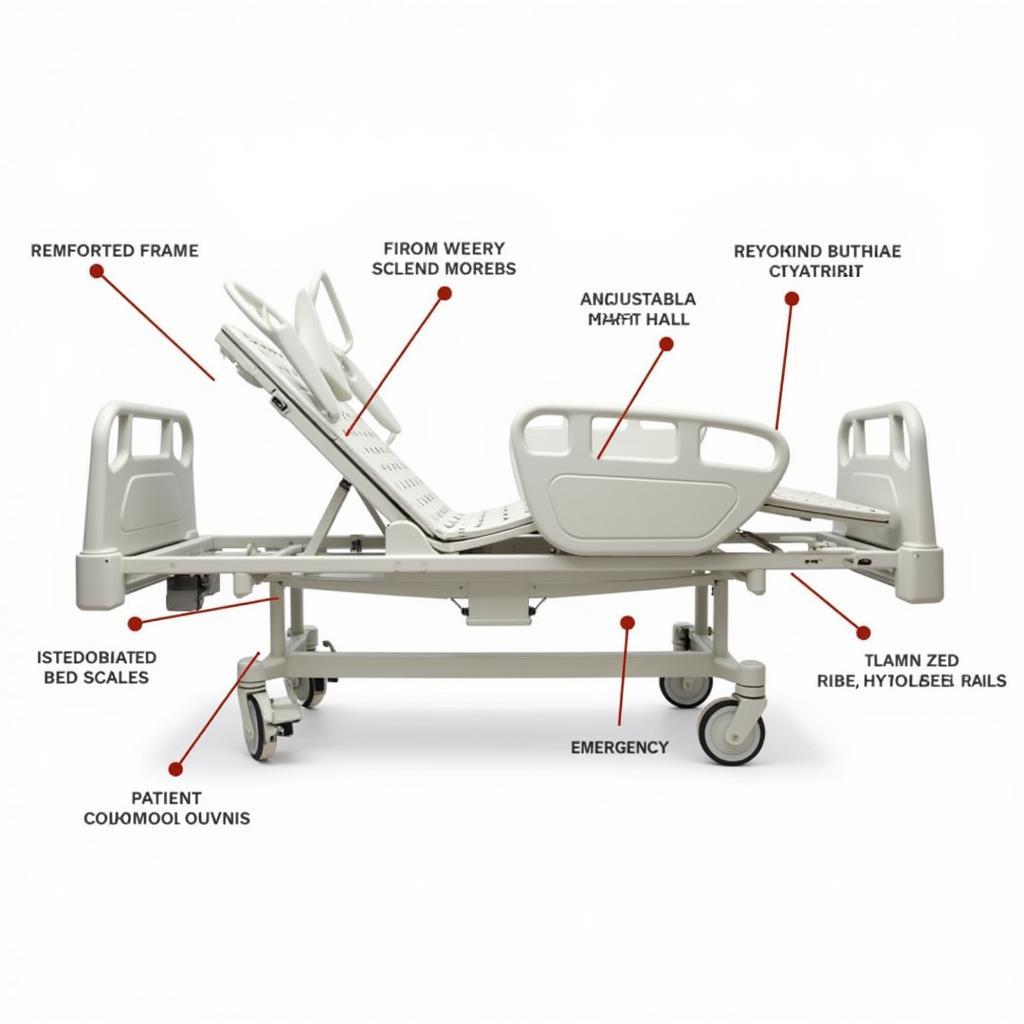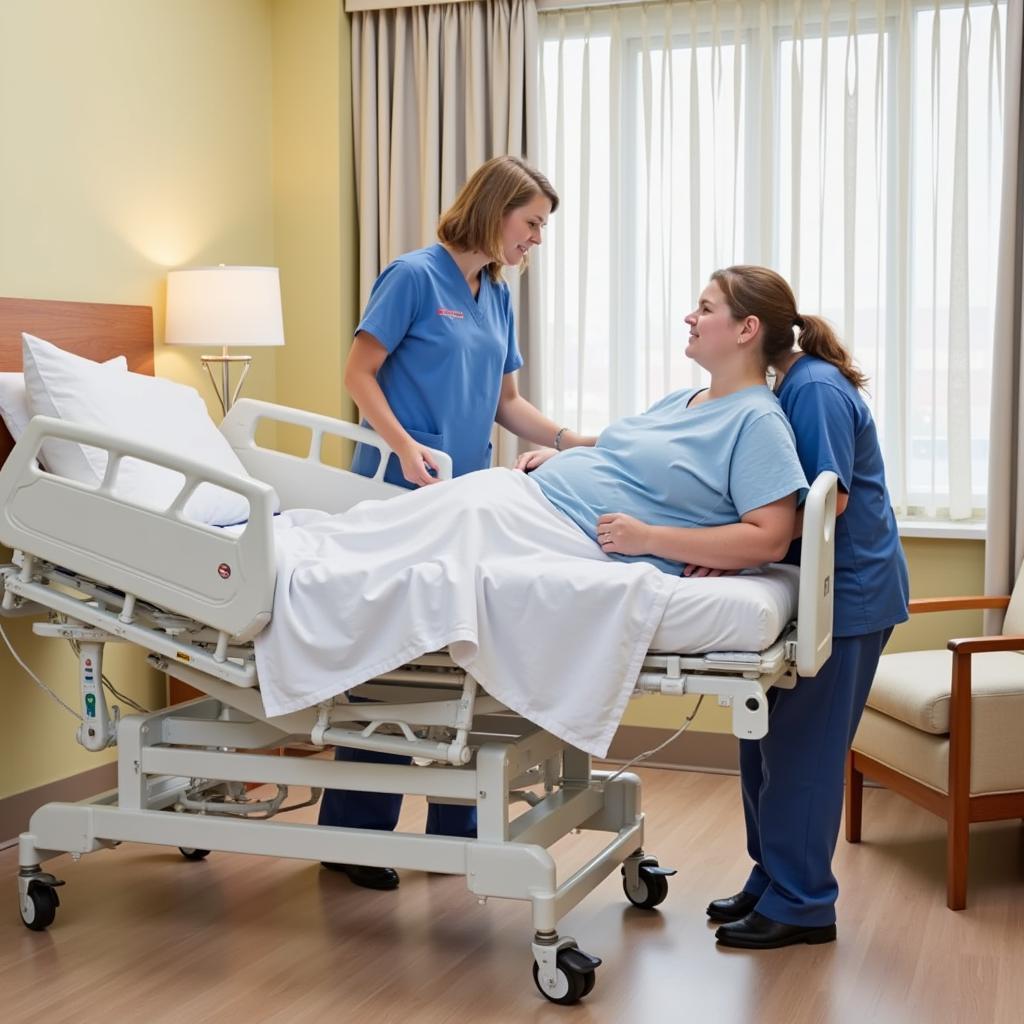Hospital Bariatric Beds are specially designed beds that cater to the unique needs of bariatric patients, individuals with larger body types. These beds are built to accommodate higher weight capacities and offer additional features that ensure comfort, safety, and ease of use for both patients and caregivers. Choosing the right bariatric bed is crucial in providing quality care and improving patient outcomes within a hospital setting.
 Hospital Bariatric Bed Features
Hospital Bariatric Bed Features
Why are Hospital Bariatric Beds Important?
Standard hospital beds often lack the necessary support and weight capacity to safely accommodate bariatric patients. This can lead to discomfort, increased risk of falls, and difficulty for medical staff in providing appropriate care. Hospital bariatric beds address these challenges by offering:
- Enhanced Weight Capacity: Bariatric beds are built with reinforced frames and heavy-duty components, allowing them to safely support patients weighing significantly more than the average person.
- Increased Surface Area: A wider and longer bed surface ensures that bariatric patients have ample space to lie comfortably, reducing the risk of pressure ulcers and promoting better sleep.
- Adjustable Features: Many bariatric beds offer a wide range of adjustable features, including height adjustment, head and foot elevation, and Trendelenburg positioning, making it easier for caregivers to provide optimal care and for patients to maintain a comfortable and safe position.
 Bariatric Patient and Nurse
Bariatric Patient and Nurse
Benefits of Using Hospital Bariatric Beds
The use of hospital bariatric beds extends beyond basic comfort and safety. Here are some key benefits they provide:
- Improved Patient Outcomes: By providing a comfortable and supportive environment, these beds promote better sleep, reduce pressure ulcer risks, and facilitate faster healing.
- Enhanced Dignity and Independence: Bariatric beds allow patients to move more freely and participate in their care, fostering a sense of dignity and independence. Features like integrated bed scales and patient assist rails further contribute to this.
- Increased Staff Safety and Efficiency: These beds often come equipped with features like electric controls and integrated weighing systems, making it easier for nurses and caregivers to reposition patients, monitor vital signs, and provide care safely and efficiently.
Investing in hospital bariatric beds is a crucial step in providing inclusive and equitable healthcare for all patients.
Choosing the Right Hospital Bariatric Bed
When selecting a bariatric bed for your hospital, consider the following factors:
- Weight Capacity: Determine the maximum weight the bed needs to support safely.
- Size and Dimensions: Ensure the bed’s dimensions are appropriate for the intended patient population and available space in the hospital room.
- Features and Functionality: Consider the specific needs of your patients and staff when selecting features like side rails, adjustable height, and integrated scales.
- Durability and Maintenance: Choose a bed made from high-quality materials that can withstand frequent use and is easy to clean and maintain.
 Types of Hospital Bariatric Beds
Types of Hospital Bariatric Beds
Ensuring Patient Safety and Comfort
Beyond choosing the right bed, proper training for staff on its use and features is essential. Regularly inspect the bed for any signs of wear and tear, and always follow the manufacturer’s instructions for maintenance and cleaning.
By prioritizing the comfort and safety of bariatric patients, hospitals can create a more inclusive and healing environment for all.
If you are interested in exploring options for used bariatric hospital beds for sale or learning more about how to get a hospital bed, various resources are available to guide you. You can also explore options for refurbished hospital beds or compare them with standard hospital bed features.